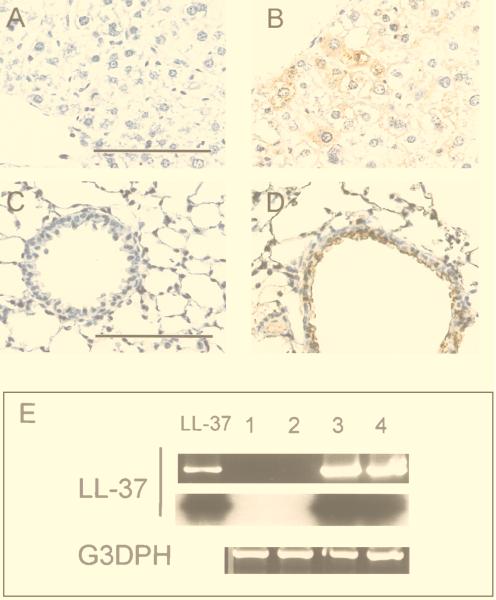FIG. 2.
Expression of LL-37/hCAP-18 in mouse liver and lungs after gene transfer. Organs were harvested 5 days after gene transfer and analyzed for transgene expression by RT-PCR and immunohistochemistry. Immunohistochemistry with polyclonal antibodies to LL-37/hCAP-18 revealed signals in hepatocytes (B) or epithelial cells of airways (D) of mice that received LL-37 vector but not in those of mice treated with Ad.AlkPhos vector (A and C). Bar, 100 μm. (E) RT-PCR was performed with LL-37/hCAP-18-specific primers and revealed the presence of transcripts only in mice after application of LL-37 vector. Amplification of glyceraldehyde-3-phosphate dehydrogenase (G3PDH) was used as a positive control. The PCR products were blotted and hybridized to an LL-37/hCAP-18-specific probe. Lane LL-37, positive control with plasmid DNA; lanes 1 and 2, PCR on RNA extracted from lungs (lane 1) or liver (lane 2) obtained from a mouse treated with lacZ vector; lanes 3 and 4, PCR on RNA extracted from lungs (lane 3) or liver (lane 4) obtained from a mouse treated with LL-37 vector.

